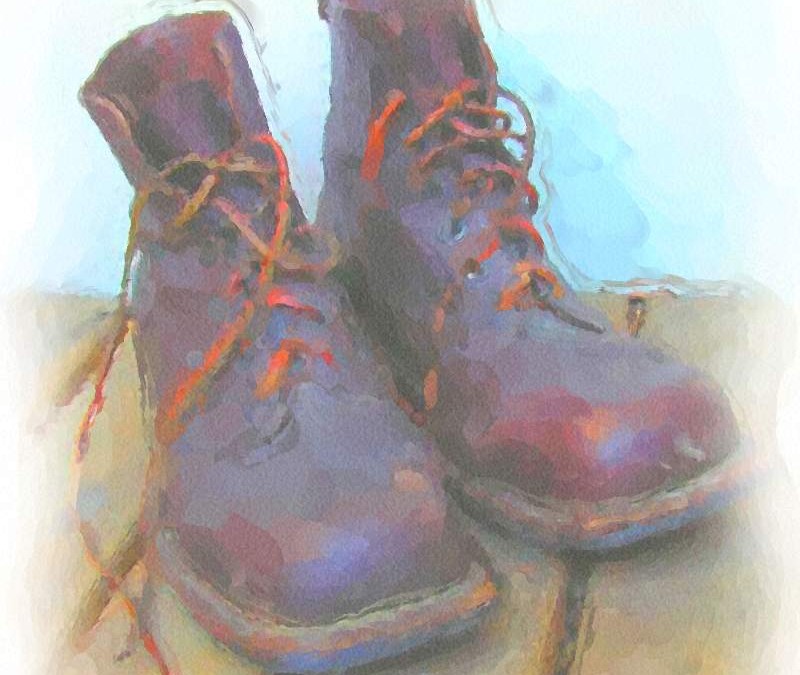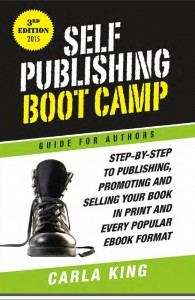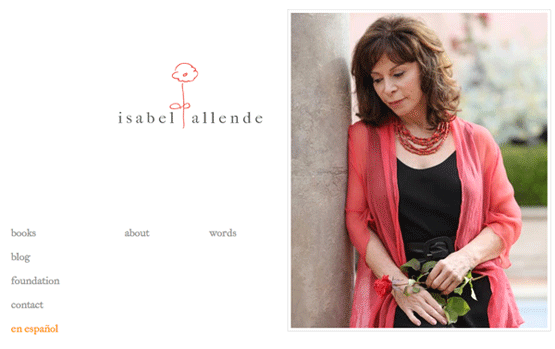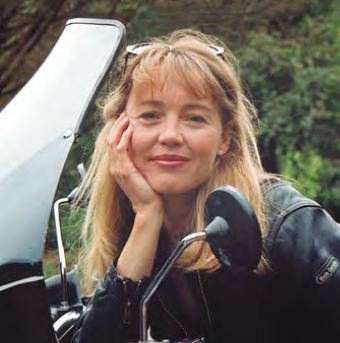Self-Publishing Boot Camp: Guide for Authors by Carla King
Publisher: Carla King (February 2015)
Free download available (until April 2015): http://bit.ly/1EAXFl1
Language: English
Book Description
This guide provides walks prospective authors through the self-publishing process—step-by-step—with information on everything from choosing the right word processor to distributing, marketing, and promoting your book. Topics include:
- Hybrid publishing
- An in-depth look at running your publishing business
- Understanding and promoting your brand
- Traditional and social media marketing
- Understanding metadata
- And more. . .
Virtual workshops are available for download to your desktop.
Excerpt
Chapter 5: Your Author Brand
Now’s the time to start creating your public persona, including identifying images, graphics, words and photographs that work in harmony with your author voice. Actually, the ideal time to start is years in advance, but it’s never too late to begin. Here’s a path to developing your author brand.
- Understanding brand
- Elements of your brand
- Your author bio
- Your author photo
UNDERSTANDING BRAND
Your author brand is a big part of your author platform. It defines the way people perceive you in the marketplace. While brand may not be as important to you as it is to Dove soap or Nike, it warrants some basic consideration. Most authors don’t think of brand at all, but realizing and leveraging your brand help you market yourself and your books.
For authors, when we talk about brand we’re mostly talking about “voice.” Each of us (hopefully) offers a unique experience to readers. But the emotional experience you deliver to readers can also be applied to visuals like your author photo, book covers and website.
Granted, it’s better to have a plain, simple website than to have a poorly designed, ad-hoc site with clashing and confusing colors, typography and images. So try to present a consistent and recognizable presence, and keep at it for long enough that people start to recognize you.
For example, I like Isabel Allende’s website. It’s simple and it features her, and only her. She can get away with this because she’s so famous. Or maybe her webmaster (or PR firm), who’s obviously really really good, and has probably worked with a marketing pro, or is a marketing pro, has decided that this is a trend for author websites. People do, after all, connect with people.
I liked Allende’s old website, too. It definitely conveyed more information about her books but it also managed to give you a hint about her as a person and a writer and the reading experience you were likely to find.
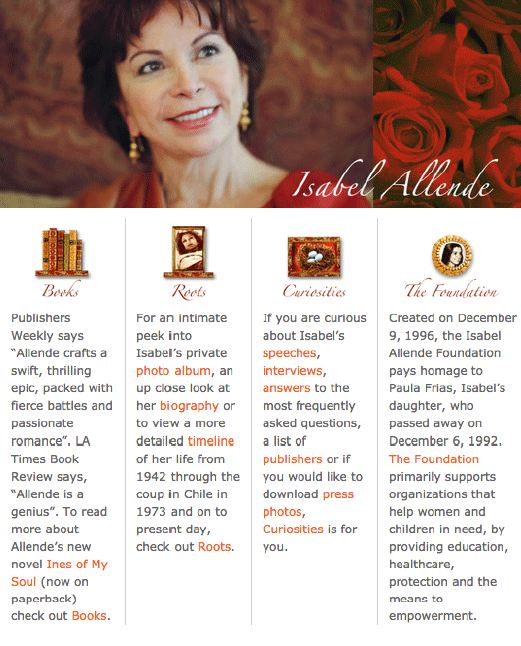 Why am I not discussing all this in the section on websites and blogs? I used to work in the San Francisco Bay Area as a web consultant, so the technical aspects of websites and writing for the web is very easy for geeks like me. But brand is subjective and elusive and it appears everywhere. It appears in your writing, on your website, your book covers and even your hair and your clothes, your house and the car you drive. I struggle with brand—with my adventure travel writer persona versus my self-publishing geek persona. Which one is me? Well, that’s why I have two websites. Brand is style and, like many authors, I find that I cannot reconcile the two in one place.
Why am I not discussing all this in the section on websites and blogs? I used to work in the San Francisco Bay Area as a web consultant, so the technical aspects of websites and writing for the web is very easy for geeks like me. But brand is subjective and elusive and it appears everywhere. It appears in your writing, on your website, your book covers and even your hair and your clothes, your house and the car you drive. I struggle with brand—with my adventure travel writer persona versus my self-publishing geek persona. Which one is me? Well, that’s why I have two websites. Brand is style and, like many authors, I find that I cannot reconcile the two in one place.
Here’s an attempt to nail the visual and style aspects of brand down into manageable chunks that you can use consistently so that readers can recognize you.
- Your brand is made up of solid and recognizable trademark items like your author name, publisher or company name, photography, logo, colors, images, even typography.
- In your author photo, elements of your brand might be considered personal style: a feather boa, a motorcycle, a hat, red lipstick, tweed jacket, your cat.
- Brand is communicated on your website, social media profiles, stationery, posters, and other print materials.
- Brand creates the feeling people have about you—the thing that you are known for. This is also called author platform.
- Brand is reflected in your writing style, your media personality, your expertise or niche, and your overall image as reflected by your activities in person and in social media.
ELEMENTS OF YOUR BRAND
To organize elements of your brand you might want to create a brand worksheet or idea folder on your computer to collect images of visual brands that attract you. To save web pages, print to PDF and save them to your brand idea folder. Professional designers love getting this kind of input. It saves them from having to try to read your mind and thus costs you less in logo, website and even book cover design.
- Web pages
- Book cover
- Company logo
- Graphics
- Author photos
- Color scheme
- Typography
The first thing you might want to do is to decide on your publishing house name. Choose a version of your name or something more descriptive. For example, I opted for Misadventures Media instead of choosing King Press or King Media.
But remember that your author name is your strongest brand. Decide on your author name or pen name and try to grab it for your domain name. Luckily I was able to buy CarlaKing.com early on. But if someone else with your name has already claimed yours, you may need to use your middle initial or incorporate the word “author” in your domain name.
A logo is an essential element of your media presence. Use it long enough and people will begin to recognize and trust it. It is important to develop a logo that is simple and effective in various sizes. It should look great both in color and grayscale. Your logo might incorporate your company (publishing house) name, or it may be a standalone graphic or type treatment.
Take a look at the spine and title pages of books at a library or bookstore and note which publisher logos are effective and why. Sketch out some ideas for your logo and collect examples of those you like before contacting a designer. You can find people to create a logo fairly inexpensively by using a crowdsourcing site like 99 Designs or even Fiverr. Also look for book design professionals via a site like Writer.ly, Bibliocrunch, Reedsy and others. Remember that though you could get lucky, you often get what you pay for.
YOUR AUTHOR BIO
Your biographical description is an extremely important asset that affirms your author brand. Information you share about yourself may include your education, accomplishments, professional qualifications, awards, titles, prior publications, media appearances, location, and family information.
If you’re writing an academic book you know that your education and awards need to be highlighted. Business book authors must point to their expertise. Authors of historical fiction will be taken more seriously if there is a clear connection to place and time. If you write fiction, romance or children’s books, take a look at authors that compete in your particular genre and follow the lead of the most successful.
Like an elevator speech, your author bio should be entertaining, informative, not boring. It also needs to convey how you are uniquely qualified, talented, or fascinating enough that anyone will want to read your book.
Author bios can be used on the back of the book, your website, on other people’s websites, in press and news releases, in magazine articles, advertisements, speeches, at dinners, and as introductions by interviewers. A good test is to read it out loud as an interview on the radio might, and gauge whether the listener would change the channel.
Create several different bios to apply to different media, from long to short: between 30 and 250 words for various websites and social media, and just 140 characters for Twitter. Write your bio in the appropriate tone. Consider a tag line or a title. Also make sure your bios are keyword-rich, so search engines can help you market (as explained in the chapter on discovery).
In my workshops I like to divide authors into groups of three people who don’t know each other. Each author is interviewed by the other two for five minutes. Those two people then write the bio of the author interviewed. Then we switch, and everybody gets two bios to use as source material for their author bio. It works because most of us are too shy to brag about our accomplishments and besides, it’s difficult to know what’s interesting about ourselves. Lots of great bios have come out of these exercises. Maybe you can find two strangers who are authors to share this exercise with you. And, who knows, that may be the beginning of a writing group.
YOUR AUTHOR PHOTO
Your photo is a recognizable part of your author brand, so make sure that it is fairly recent, or at least really does still look like you. It should sharply frames your head and neck and look good in both color and grayscale.
Do try to avoid shots with a lot of competing activity in the background, or one where you’ve Photoshopped out your ex. You will need to be clearly recognized, even when the photo is reduced to the size of a postage stamp, because that’s about all the space some social media sites give you.
Decide what you want to convey to readers about you in your author headshot—studiously sexy, geeky glam, adventurous, goofy, beautiful, serious or shy. Also write down the physical qualities you want to highlight—your hair, eyes, or smile. What look will attract your audience? Trustworthy (or untrustworthy)? Exciting and smart and funny? Entrepreneurial bohemian? You get the picture.
How do you hire a good photographer? Well, it probably shouldn’t be that gal at the drugstore who snapped your passport photo. Maybe you’re lucky enough to have a talented photographer in your circle of friends or family. You may find one at a writer’s conference. Look for portrait photographers in your area. You see them all over the place, parading families into scenic settings, coaxing smiles from cranky toddlers. Expect to pay between $50 and $200 for a session depending on how much time they spend with you in various settings, plus an order minimum.
Yes, all this does cost money and is included in my outline of budget basics in the chapter on doing business as an author. Remember, indie authors are businesspeople in the publishing industry, and budgets and financial planning are critical to success. ♥
Excerpt from Self-Publishing Boot Camp Guide for Authors by Carla King
Reprinted by permission of the author and publisher.
Reviews
Clear navigation through the mind-boggling complexity of self-publishing
“I self-published my first book 10 years ago. It took me at least four months to figure out and perform all the non-writing steps. That book was just an offset run, I did not do e-book then, though I did consider POD at the time. Between King’s book and to a lesser extent, some other info I’ve picked up, I’ve got a good handle on the lay of the land in less than two weeks. Her book has given me confidence and clarity on my plan.
One particular insight was essential for me. After weeks of talking with and reading experts in matters of self-publishing and distribution, I realized, to my horror and surprise, that I had lost sight of my goals for this book. King’s reminder to consider my goals was worth many more times my investment in – and my time – reading the book.
There are so many choices and options in self-publishing that it can be mind-boggling. I found King’s judgment to offer sound philosophy, clear logic and a reasonable attitude with the myriad of available options and complexities.
Every author will find parts that speak to him/her differently. But the main point is that King has provided a comprehensive roadmap, from start to finish that touches on almost everything. Someone with no publishing experience can pick this up and effectively publish their first book. Without a book like this, a first-time self-publisher will be lost.
The only topic/question that I felt was unaddressed was the question of preparing images for e-books. I have since learned that King will include that information in a forthcoming update.”
– Amazon reviewer
A must for aspiring self-publishers
“If you’re thinking about self-publishing you will want to read this book. Carla explains how, gives you options, and when you have made your decisions she walks you through completing your tasks. I found this book to be a very valuable resource.”
– Amazon reviewer
About the Author
Carla King is a travel and technology writer and founder of Self-Pub Boot Camp, a program of books, workshops and online seminars. She began her self-publishing journey in 1994 with a book about bicycling the French Riviera.
In 1995 she pioneered the art of the realtime online travelogue with American Borders, reporting live to the internet from a journey around the USA on a cranky Russian sidecar motorcycle. She continued the series with trips in India, China and Europe, reporting back by blogging (though the term “blog” hadn’t yet been coined).
Today Carla combines her love for travel, writing, publishing and technology by splitting her time between Self-Pub Boot Camp and her adventure travel activities. She is a regular presence at adventure conferences (often giving seminars on writing and publishing your travels), and organizes the self-publishing track at the annual San Francisco Writers Conference. On the Monday after the conference she runs a daylong intensive Self-Pub Boot Camp. ♥
For more information about Carla King’s work, visit carlaking.com.
“Army-boots” by Liftarn – Own work. Licensed under CC BY-SA 3.0 via Wikimedia Commons –
